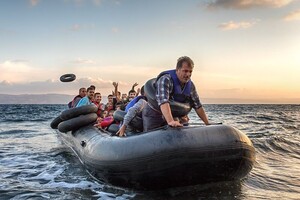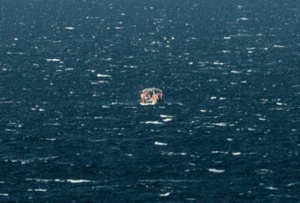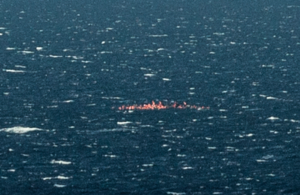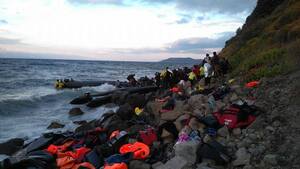A dispatch from an Irish volunteer helping with the refugee crisis in Eftalou (above) on the island of Lesbos, Greece.
I arrived in Eftalou on Lesbos island, Greece last Saturday week. Located around 70km north west of the island’s main city Mytilene, the village is home to a picturesque pebbled beach, overlooking the Aegean Sea and the Turkish coastline.
I went for a walk heading eastwards along the twisty, hilly, cliff-edge dirt road cut into mountainous terrain that stretches for 17km from Eftalou to the pretty village of Skala Sykaminia.
Reaching the top of the dusty hill at the edge of Eftalou, the the view unfolded to show a breathtaking seascape framed by a necklace-like chain of discarded neon orange life-jackets snaking along the Greek coastline.
I met an elderly Greek man, who was also looking out at the sea that looked as flat as glass under the scorching sun.
‘No boats today,’ he said referring to the daily arrival of almost 7,000 refugees.
But, within hours, they came.
Several days later, the weather changed and it rained solidly for almost three days. The dirt road from Eftalou to Skala Sykaminia – where volunteers drive all day watching out for boats -crumbled from the heavy rainfall and the only way I can describe the situation is utter chaos.
The well-intentioned people who are helping them off the boats, giving them clothes, food, water, and medical attention – before sending them on their way to Camp Moira, where every refugee has to register – are volunteers.
Save for the nurses, doctors and one small team of four Spanish lifeguards, the volunteers are very young and inexperienced.
The effort that’s playing out along this 17km of coastline is super-human but it’s fragmented, splintered, ill-conceived and, because of this, dangerous for both the refugees and the volunteers themselves.
I have rowed in with a Norwegian volunteer group, Dråpen i Havet (A Drop In The Ocean) and, in just a week, I have seen exhausted volunteers weep as they process what they have witnessed, what they have heard and come to terms with what they cannot do.
People are dying in the water; boats are disappearing from sight; refugees who make it to the shores of Lesbos tell of children falling out of the boats; some refugees who are tasked with driving the boat, but who can see how dangerous the journey is, tell of guns being held to their heads when they wish to turn back to Turkey; some tell volunteers that they injected their children with heroin so that they don’t wail throughout the boat trip and risk being tossed over the side of the boat; they tell of passing destroyed boats and seeing people drowning.
The volunteers are everything from dancers to bankers, they do the best they can and use common sense but they still don’t know what they’re doing – all on maybe three to four hours’ sleep.
The refugees come off the boats freezing cold, drenched, tired and scared. Children and babies often have to sleep on the street, in the rain, with no blankets or cover. Some haven’t eaten for days. The shocking lack of logistical expertise means that even when the volunteers have water, food and blankets they literally don’t know how to distribute these essentials because they’re afraid of a mob forming.
A poorly constructed camp with the UN logo emblazoned on its cabins and tent in Skala Sykaminia is run solely by volunteers. I have been there several nights until the early hours of the morning and there are no UN staff here.
There is no significant support from any major organisation that could, first of all, care for the people who land along this 17km stretch correctly and, second of all, co-ordinate and create an efficient manner to help these people reach Mytilene.





